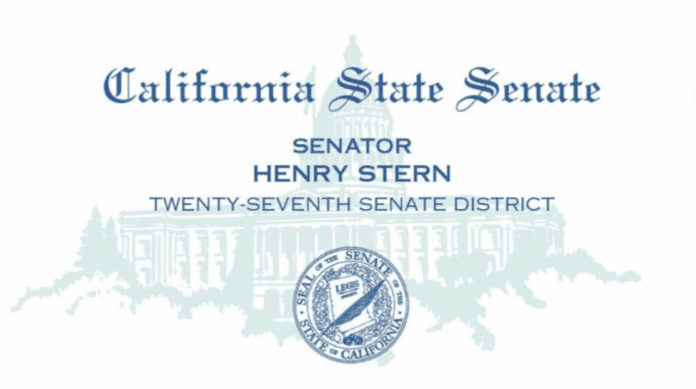With Malibu and the rest of the state coming into the third year of drought, and residents within the Las Virgenes Municipal Water District; which serves water customers outside the city limits of Malibu, all the way across the Santa Monica Mountains, now are limited to watering their landscaping one day a week. Many are expressing concern that vegetation will completely dry up, turning the area into one big tinderbox.
Even before the watering restrictions for Las Virgenes went into effect on June 1, Malibu’s State Senator, Henry Stern, sent a letter on May 16 to Karla Nemeth, director of the California Department of Water Resources (DWR), asking that the communities in his 27th District “receive sufficient water supplies to protect their health and safety.”
“A large number of people in my District reside within areas that are both dependent on State Water Project (SWP) supplies and designated as Very High Fire Hazard Severity Zones,” Stern wrote.
“Effective June 1, 2022, many of these communities will be implementing a one-day-per-week watering restriction as part of Metropolitan Water District of Southern California’s (MWD’s) Emergency Water Conservation Program. Further, I understand that a complete ban on all outdoor watering may be required later this year if conditions do not improve. Recalling the devastating impacts of the 2018 Woolsey Fire, I am very concerned that sufficient water supplies may not be available to maintain fire-resistant landscaping for wildfire safety and protection at the urban-wildland interface as designated by the Cal Fire Hazard Severity Zone Map.”
Stern called on area water and fire officials to work with MWD to determine the water supply needs for maintaining landscaping critical for fire suppression in the wildland-urban interface, and submit that information to the state to back up the request for health and safety water deliveries.
According to a June 3 report in the Los Angeles Times, the state is open to the idea, and several water agencies besides LVMWD are now working on sending requests into the state.
Nemeth said that “public safety is of paramount concern to the Department of Water Resources” and explained that what constitutes a health and safety use of water is defined in agreements between DWR and the agencies it supplies.
“In this context, a health and safety need means the water supply for domestic, sanitation and fire-suppression use,” she said.
At the Las Virgenes water district Town Hall meeting on May 11 to explain current water restrictions, shortages in water supply, and programs to assist customers in meeting water efficiency goals, a total 1,316 people attended and asked over 500 questions in the Q&A chat — indicating a huge level of public interest in the topic.
Residents’ concerns about how water restrictions would affect wildfires dominated the Town Hall questions, with many homeowners convinced that the greenery around their houses was protecting them from fire.
However, experts give a lot of reasons why green landscaping and lawns don’t necessarily save a house from burning in a wildfire. For example, extreme heat and high winds don’t care how green the landscaping is — it can burn anyway. Plus, getting extra water to keep landscaping from drying up might mean less water available to fight fires with later on.
David Pedersen, general manager of LVMWD, stressed that the purpose of requesting more water from the state was not for residents to water their lawns more.
“I will ensure that doesn’t happen,” he said.


